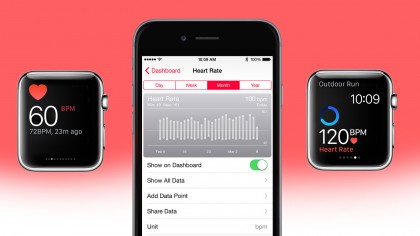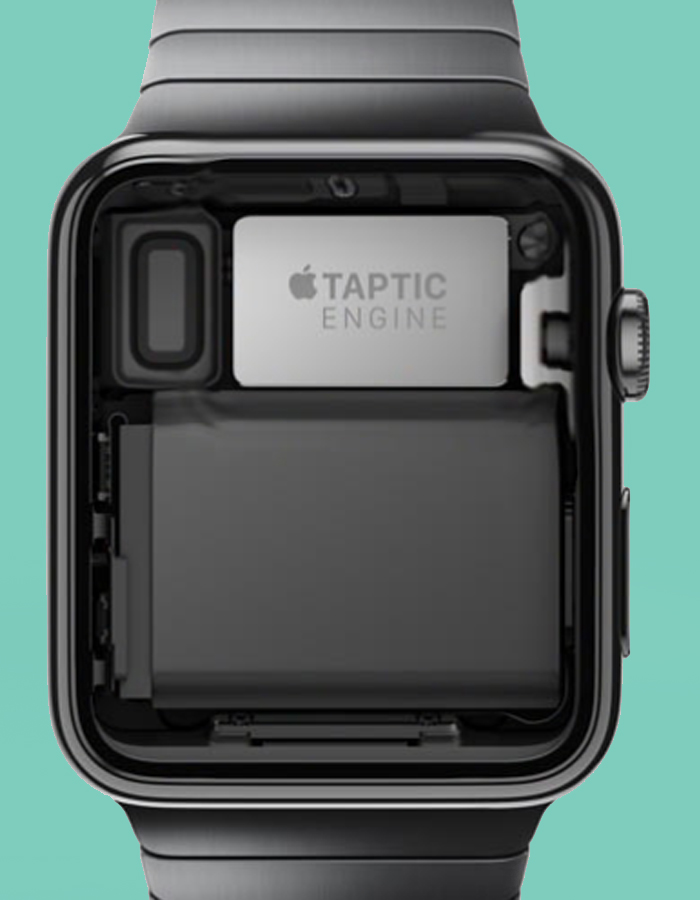Apple Watch heart rate sensor: everything you need to know
Is photoplethysmography more than just a two dollar word?
At launch, the fitness functionality in WatchKit, the OS that runs Apple Watch, is basic. The Watch's heart rate sensor does provide the beat to back simple readings and more in-depth graphs to track patterns over a period of time, but it's similar to what many other smartwatches can output.

Fitness aside, the heart rate sensor brings along a few surprise use cases that could help separate the Apple Watch from the bunch of wrist-wrapping competitors. To do this, the Cupertino-based company is having a go at making communication on your wrist more "genuine." But how?
New-age methods of communication continue to become more rich and complex, and this doesn't bode well for the limited screen real estate of a smartwatch. To challenge this trend, Apple wants you to try dumbing down your communication and talk to others without using words, but rather, your heartbeat.

The Taptic Engine, Apple Watch's vibration motor, translates your measured heart rate into pulses of vibration that can be sent to your contacts for the most basic of status updates.
This feature, of course, has limited use unless you know someone else with an Apple Watch. But for the purpose of demonstration, let's just say you do. Simply navigate to a contact using the Side Button and Digital Crown and select the middle option to send a Digital Touch.
At this point, holding two fingers on the screen sends your measured heartbeat along. The recipient will feel your heartbeat on their wrist. Creepy, awesome, whatever your opinion is, the utilization of the tech inside the Apple Watch is unique. If anything, it tries to cut out the unnecessary manual chit-chat like "hello," "I'm thinking of you" or "I have an Apple Watch" from your texting lexicon.
Putting a humanizing spin on a basic feature
Retina Display, FaceTime, Touch ID. At their core, these are just mainstream features -high pixel-density screen, video calls and a fingerprint scanner- wrapped in Apple-generated phrasing that's designed to tug at our heartstrings.
Get daily insight, inspiration and deals in your inbox
Sign up for breaking news, reviews, opinion, top tech deals, and more.
The heart rate sensor in Apple Watch is just a heart rate sensor, but paired up with the vibrations from the Taptic Engine, it becomes more human. At the very least, it's a simple yet ingenious way to communicate in a fun new format. One use case I could see is helping to bridge the gap between long-distance lovers.

But will this idea spin off into anything meaningful in the future? It's hard to say. The touchscreen and accelerometer in smartphones inspired app developers to think up some awesome uses for the tech. Hopefully, with the heart rate sensor and Taptic Engine, developers are intrigued enough to get to work on some equally cool ideas for the Apple Watch.
Here's a few ideas that I thought up:
- A Metal Gear Solid-inspired stealth action game where your heartbeat can give up your location
- A status indicator in iMessages that, like the "online", "away" and "offline" status indicators, will display your heartbeat in real-time
- A rhythm game where the app procedurally generates music around the tempo of your beating heart
- A Life Alert-like feature where if your heartbeat becomes highly irregular, a service is alerted
Do you have any million dollar ideas? Submit them here and we'll steal them and not give you any credit whatsoever.
- 1
- 2
Current page: Taptic Engine and future applications
Prev Page How it works and user compatibilityCameron is a writer at The Verge, focused on reviews, deals coverage, and news. He wrote for magazines and websites such as The Verge, TechRadar, Practical Photoshop, Polygon, Eater and Al Bawaba.
